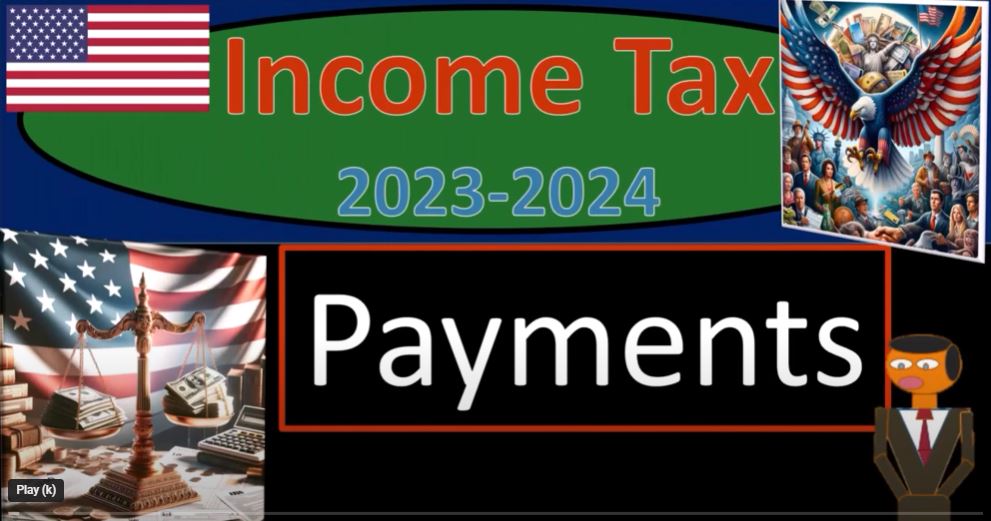Grab a cup of coffee and get ready to maximize your refunds for the tax year 2023-2024. We’ll break down the essentials, focusing on income tax payments and how to ensure you’re on the right track. Most of this information can be found in the Form 1040 instructions for the tax year 2023 on the IRS website (irs.gov).
Understanding the Income Tax Formula
The income tax formula resembles an income statement: income minus expenses (or deductions) results in taxable income. However, this is just half of the story. The second half involves calculating the tax owed on this income.
Tax Calculations
Unlike a flat tax rate, the U.S. uses a progressive tax system. This makes calculations complex, and many rely on tax software to handle this part. The software considers various tax rates and specific types of income that may be taxed differently, such as qualified dividends or long-term capital gains.
Tax Before Credits
After determining your taxable income, you calculate the tax before credits and other taxes. This can include self-employment taxes (Social Security and Medicare). Then, you apply any tax credits, which are usually more favorable than deductions because they reduce your tax liability dollar-for-dollar.
Total Tax
The total tax owed is then calculated, but we don’t just pay this amount at the end of the year. The IRS requires us to pay taxes throughout the year, usually through withholding or estimated tax payments.
Withholding and Estimated Tax Payments
Taxes can be withheld from various income sources throughout the year, including W-2 wages, 1099 income, and retirement withdrawals. Here’s a breakdown of the typical tax payments:
W-2 Withholdings
For employees, federal income tax is withheld from wages (shown in box 2 of the W-2 form). This is designed to cover your tax liability, often resulting in an overpayment to avoid penalties.
1099 Income
If you’re a freelancer or retiree, you might receive income reported on 1099 forms. Taxes can be withheld from these as well, especially from 1099-R (retirement accounts).
Estimated Tax Payments
Self-employed individuals and retirees might need to make estimated tax payments. These payments are necessary because there’s no employer to withhold taxes. Estimated tax payments ensure you don’t owe a large amount at the end of the year and help avoid penalties.
Special Cases: Joint and Separate Filings
If you and your spouse make joint estimated tax payments but file separately, you need to agree on how to divide the payments. If you can’t agree, you must divide the payments proportionally based on each spouse’s individual tax liability.
Overpayment from Previous Year
If you overpaid your taxes in the previous year, you can apply the overpayment to your current year’s estimated tax. This helps reduce the amount you need to pay throughout the year.
Changes in Status
If you have changes in your status, such as a name change or divorce, ensure the IRS has the correct information to avoid misallocation of your payments. This can involve attaching statements to your return explaining the changes and ensuring all details are accurate.
Avoiding Common Pitfalls
To avoid underpayment penalties, aim to overpay your taxes. The tax system is designed to nudge taxpayers towards overpayment to ensure compliance and avoid penalties. Keeping detailed records and using tax software can help manage this complexity.
Conclusion
Staying ahead of your tax payments requires planning and understanding the nuances of the tax system. Whether you’re an employee, self-employed, or retired, keeping track of withholdings, estimated payments, and changes in your personal situation is crucial. Use the IRS resources and consider professional help to maximize your refunds and stay compliant.

